Just the ticket.
For an index of all my Film related articles, click here.

A friend had passed his last remaining roll of Kodak Ektar 100 to be for experimentation, and I am very pleased with the results.
This is a slow – 100 ASA – emulsion with a reputation for fine grain and punchy, contrasty colors, one it lived up to in spades.
This was also an opportunity to try another processing and scanning service after the disaster that was TheDarkroom.com which I concluded was an “offensively bad business”. I wasn’t about to give them another chance.
After some Googling I came up with a couple of services which offer high resolution scans along with online downloads of scanned images. Neither returns the original film unless you ask and that’s fine with me as I would only shred it. It’s extremely unlikely that high volume industrial grade scanners will be materially improved as the business opportunity is simply too small, so the state-of-the-art is either the Noritsu or the Fuji Frontier, both maxing out at around 4000 x 6000 pixels per scan. So retaining the original film strips, with all the attendant cataloging chores, in the hope of further scanning improvements down the road is a quixotic quest.
The first lab I tried is named Sharpprints and here’s the statement from their home page:

Click the image to go the the lab’s site.
Yes, their choice of camera, the Russkie POS Zenit, is execrable, as is the way the film is being held in that image with greasy, badly manicured fingers, but that’s really all the bad news there is. But rather than sit on my hands, I wrote them about that boo-boo:
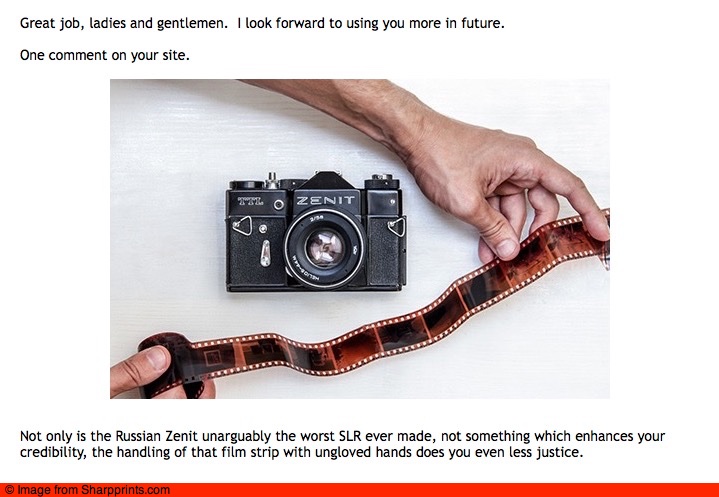
I mailed my film roll of 36 exposures on a Monday morning using USPS ($3.50) and the scans were available for download the same Thursday at 2:17pm, accompanied by a terse email alerting me to the fact. This lab also uses Dropbox for online delivery but unlike TheDarkroom.com clearly knows what it is doing as the scans were immediately available and easily downloaded in a couple of minutes.
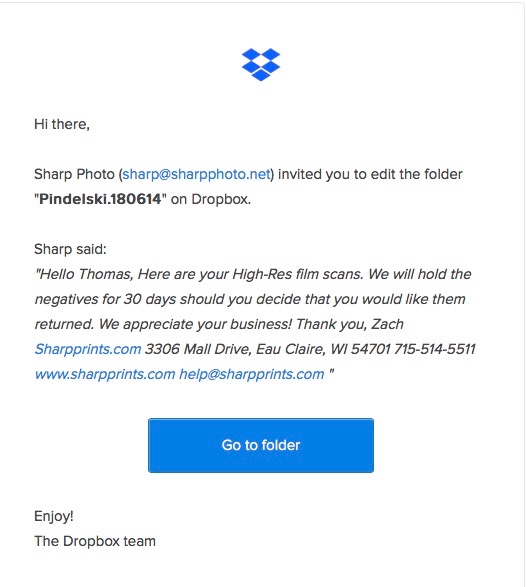
I found the results to be fine grained and much improved on Kodak Gold 200’s coarse and nasty grain. I’m thinking Gold 200 is just a poor quality product. Of the 36 scans one image had a fine piece of dirt on it – easily fixed in Photoshop – and all the others were fault free. The processing and scanning cost was just $14.
This roll of film gave me another chance to look at the abstraction of the varied architecture in downtown Phoenix and here is the ‘contact sheet’ from Lightroom after the cull:
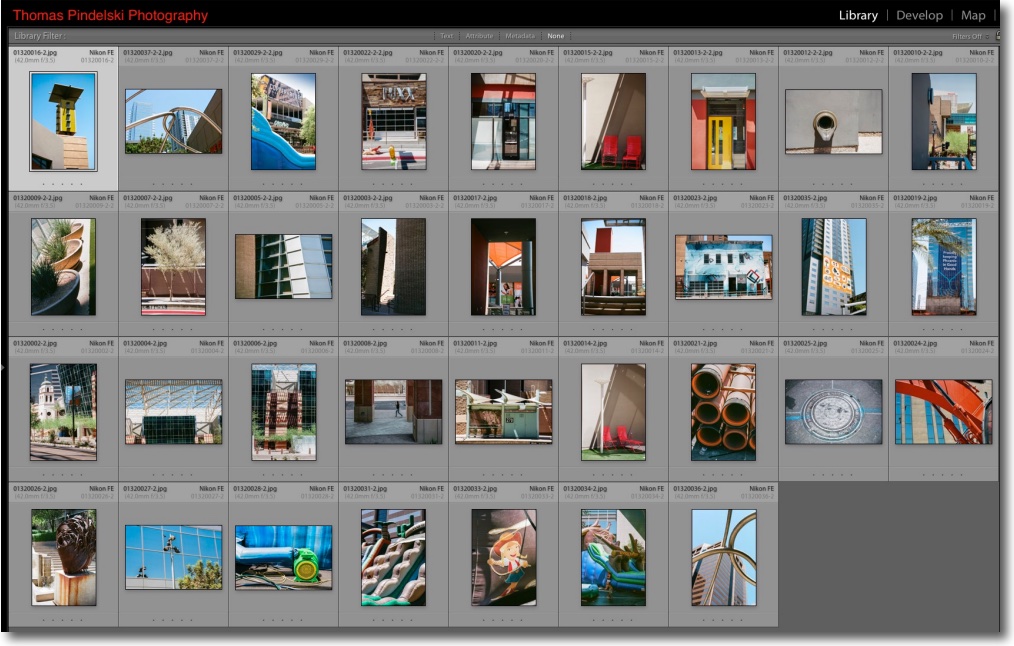
34 keepers out of 36. All those years with film inculcated economy of effort.
The colors jump out at you and the film requires careful handling of highlights to avoid burn out. A little underexposure – say 1/2-1 stop – is a good idea in high contrast situations, what was called ‘exposing for the highlights’ in the previous century.
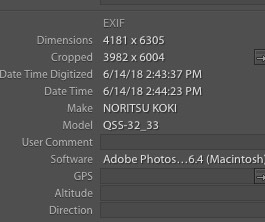
Noritsu scanner data.
Here are some favorites from this roll, all snapped on the Nikon FE and the experts assure us (who are these fools?) taken with the ‘worst zoom lens on the planet’, the excellent Nikon 43-86mm f/3.5 ‘walkabout wonder’:
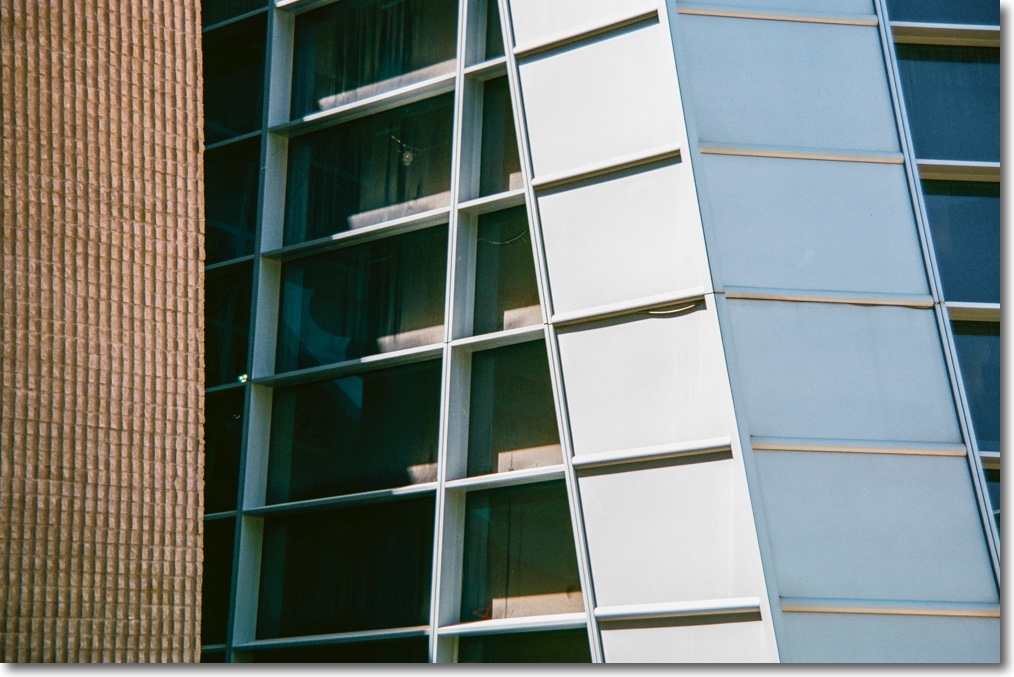
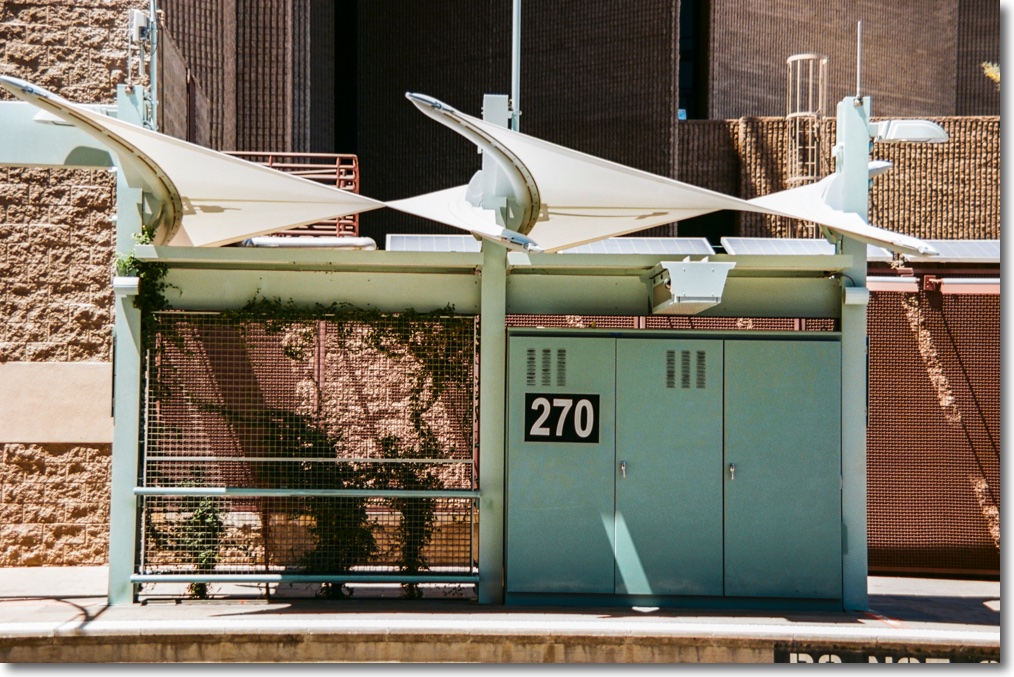
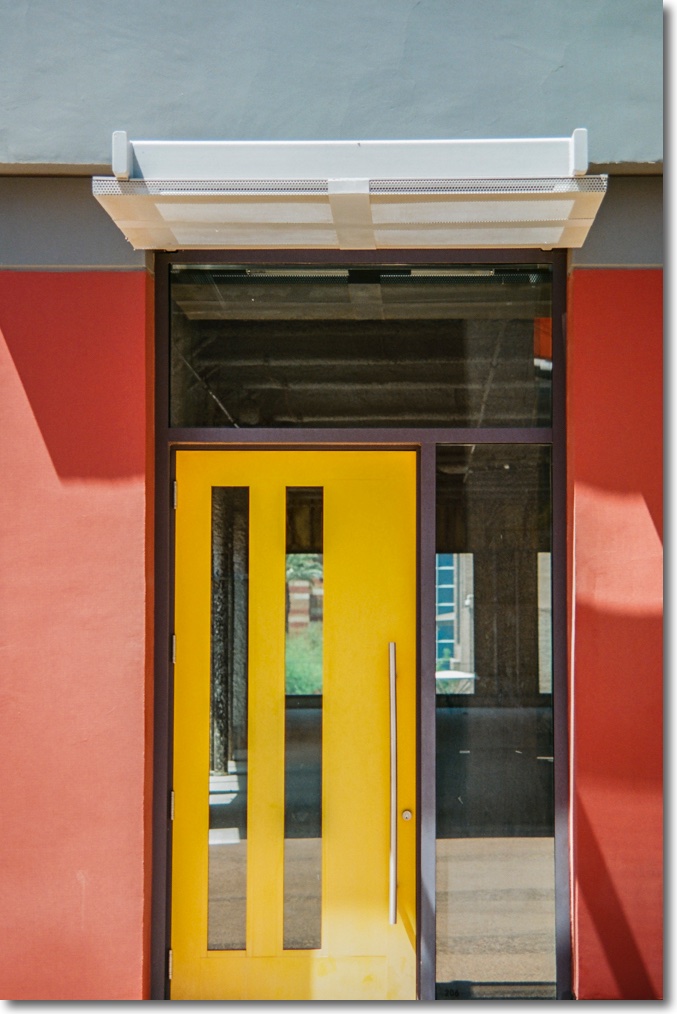
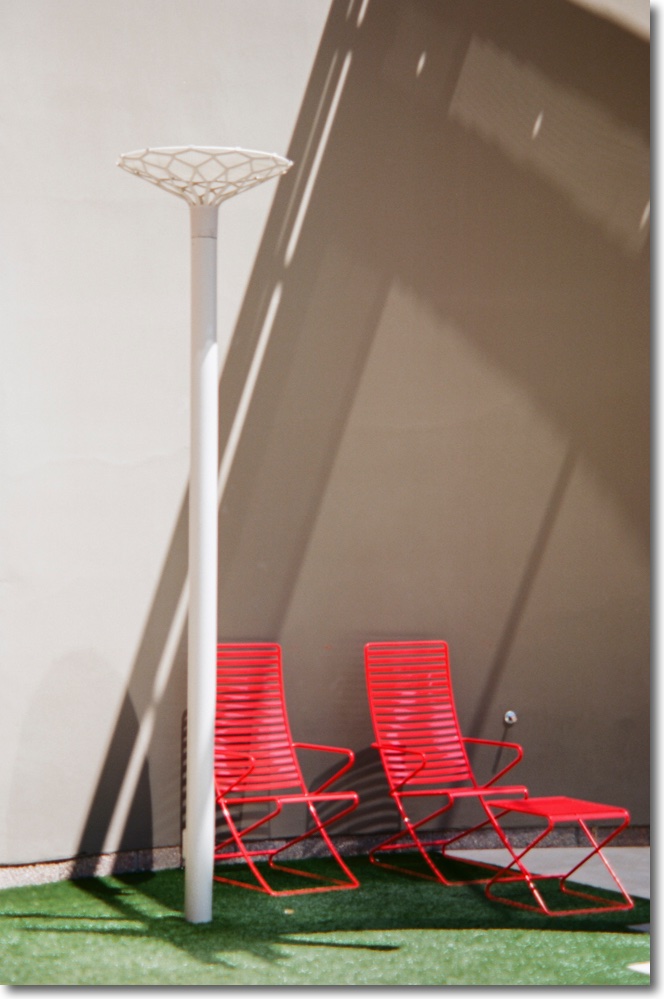
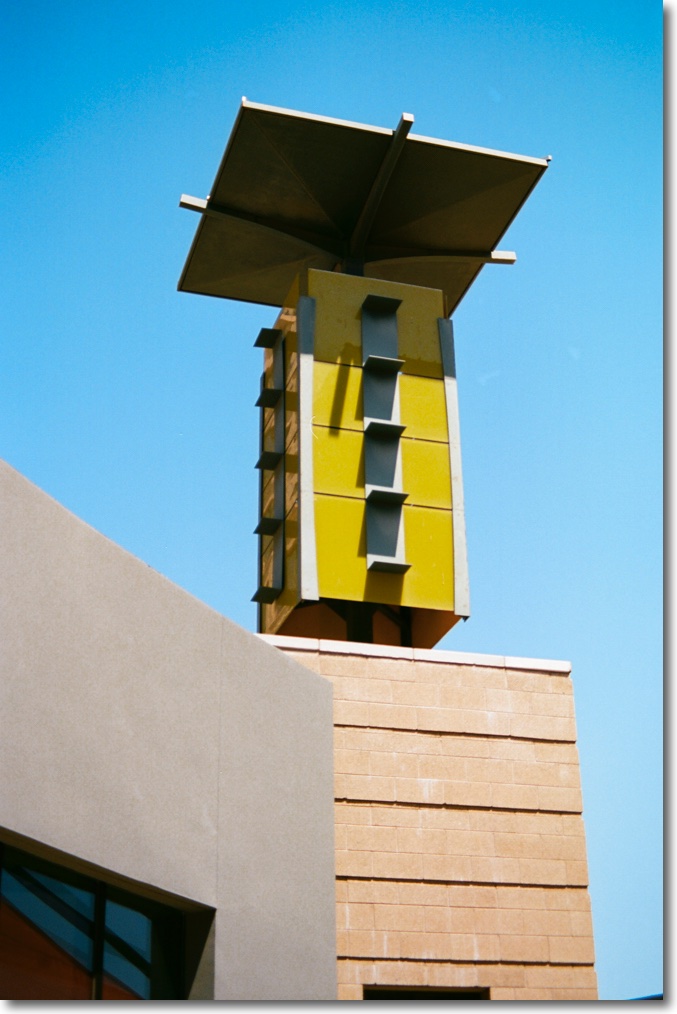
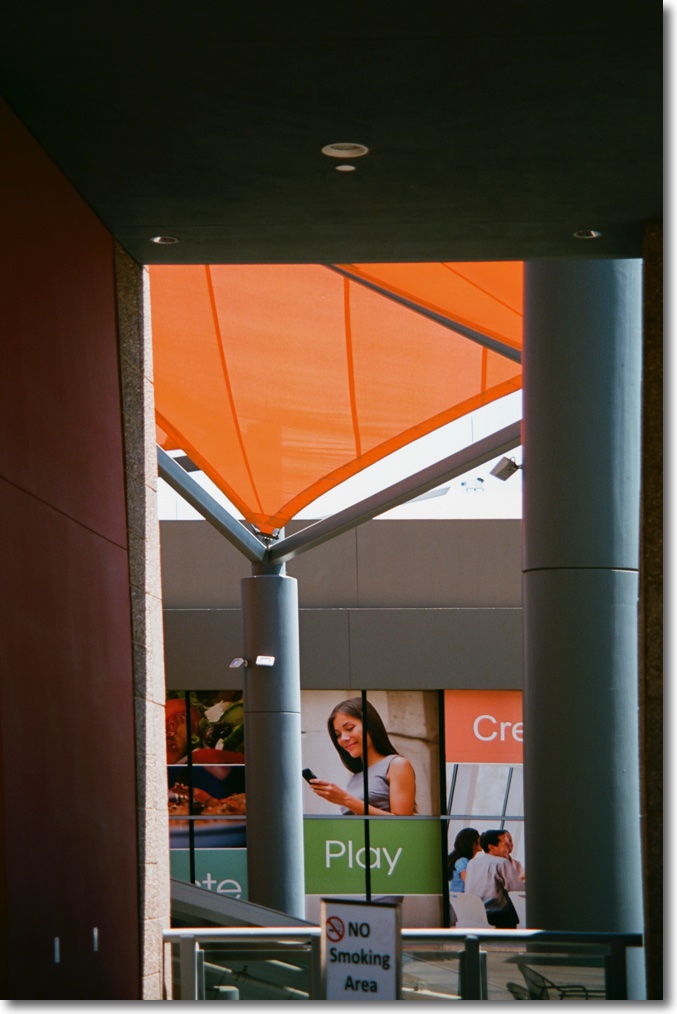
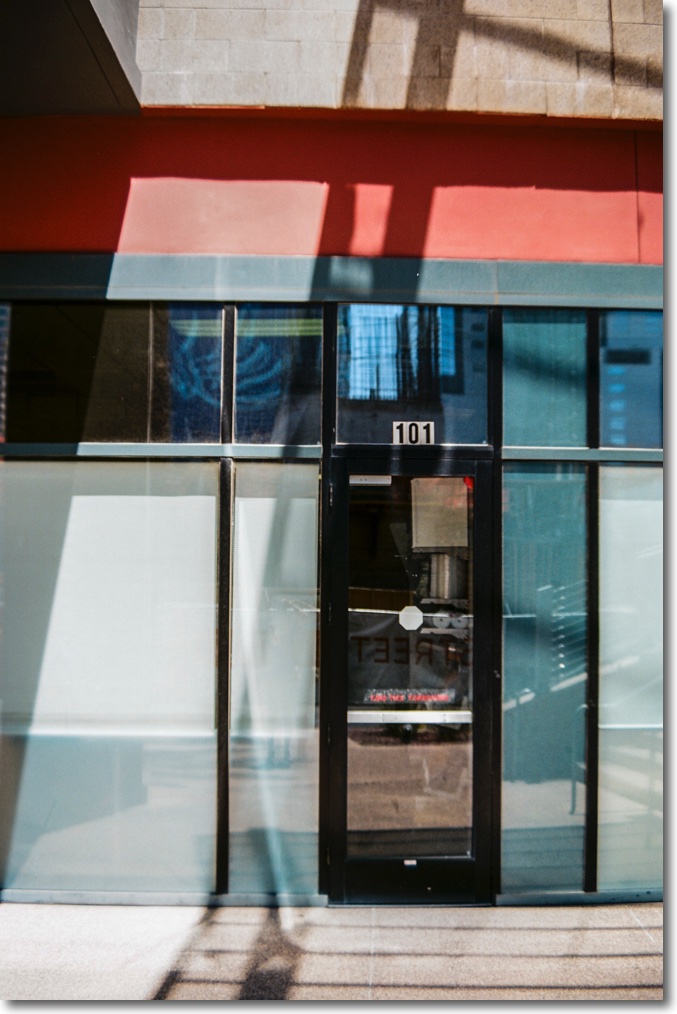
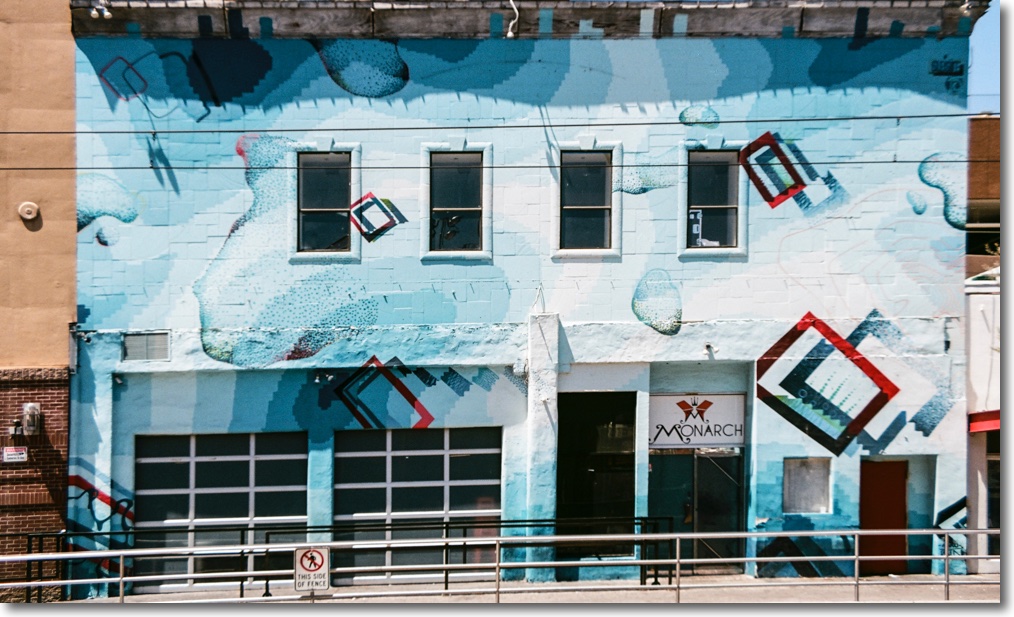
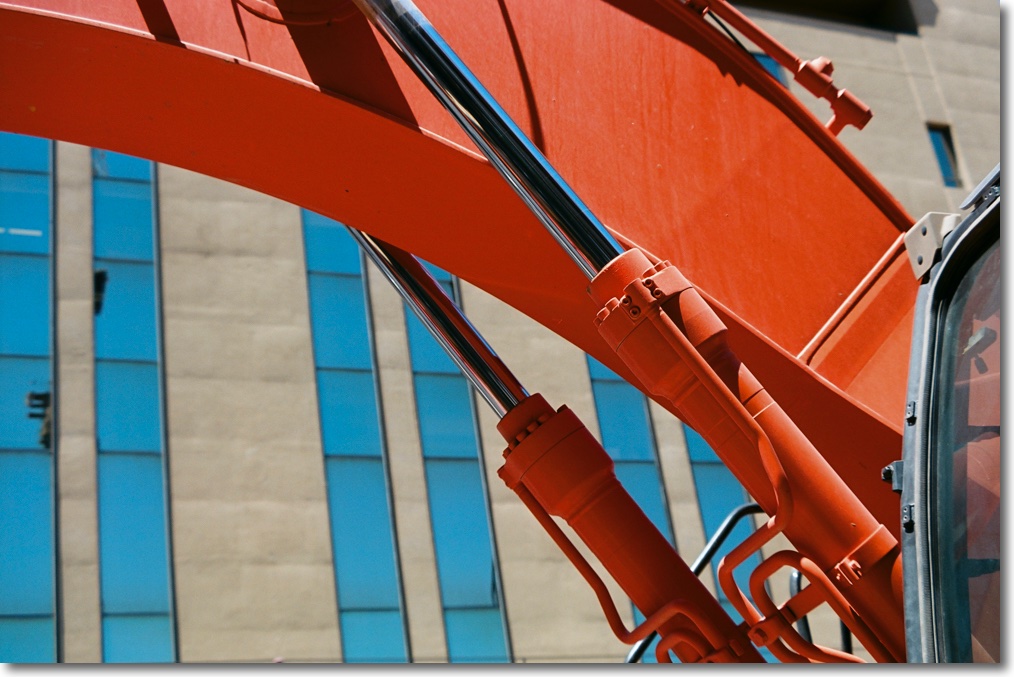
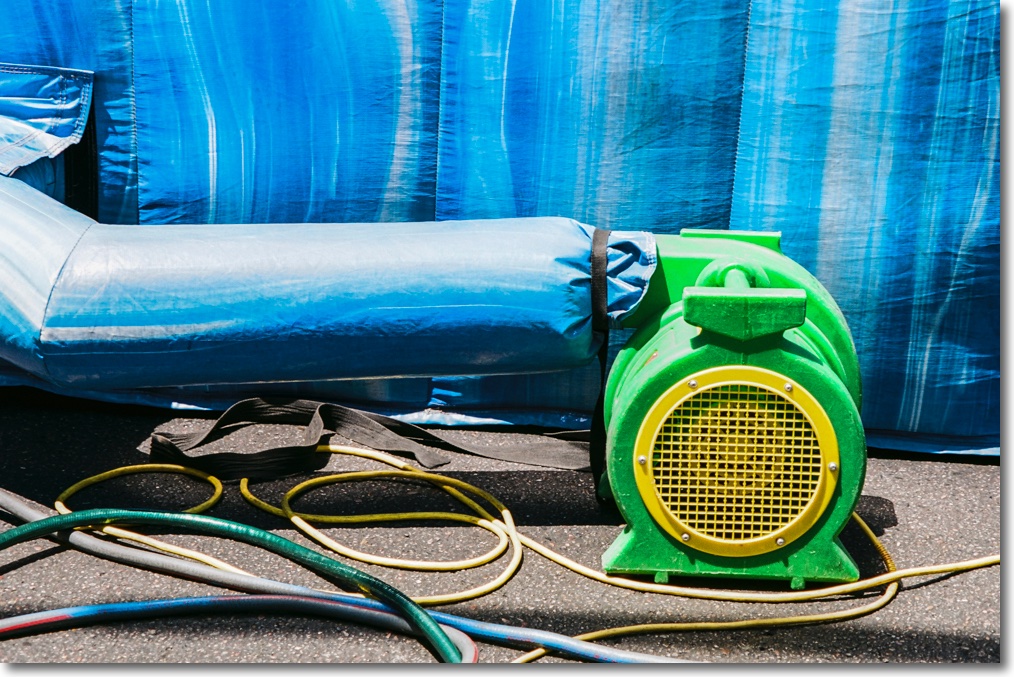
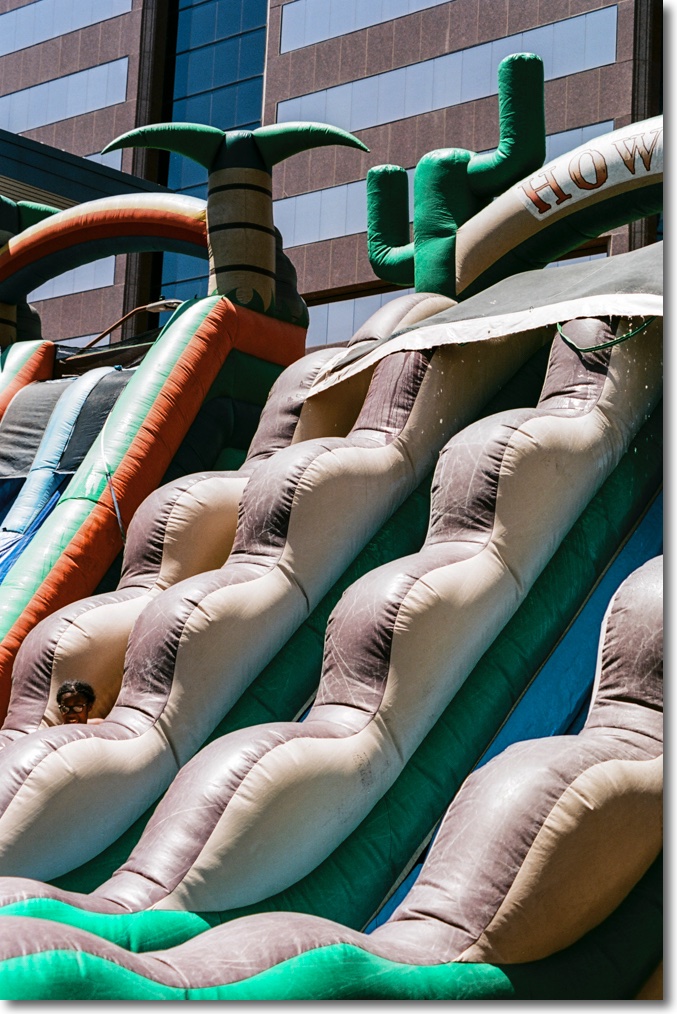
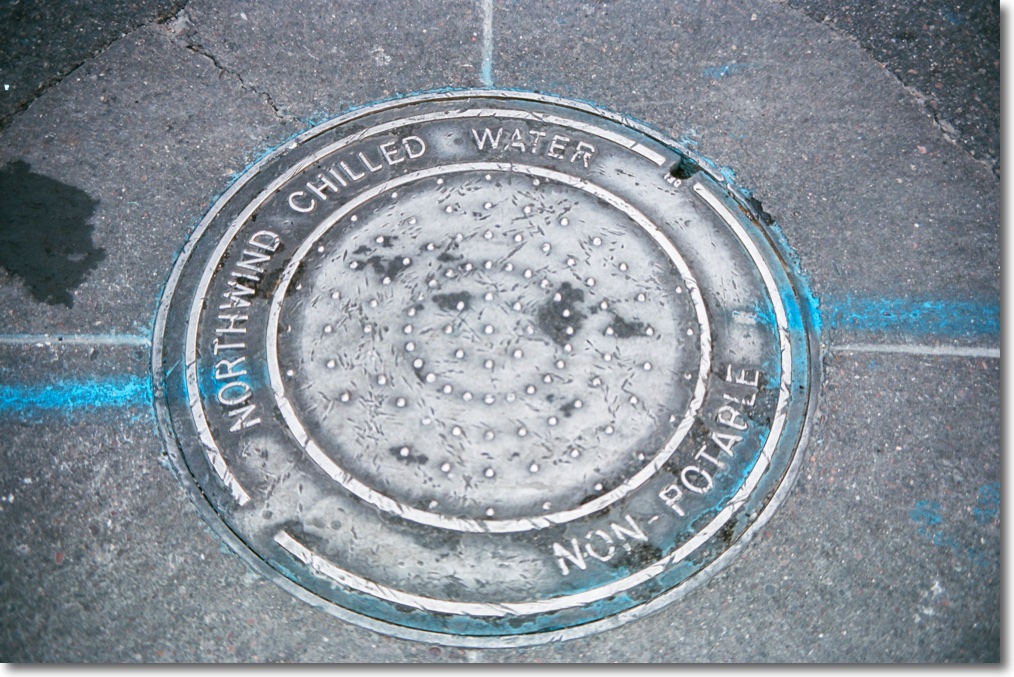
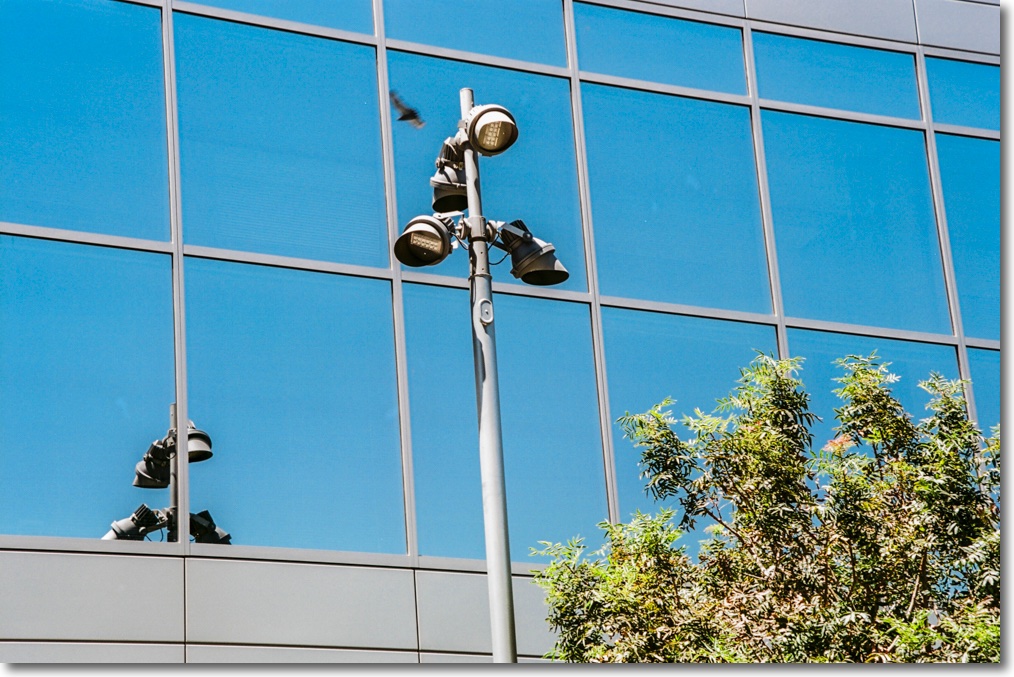
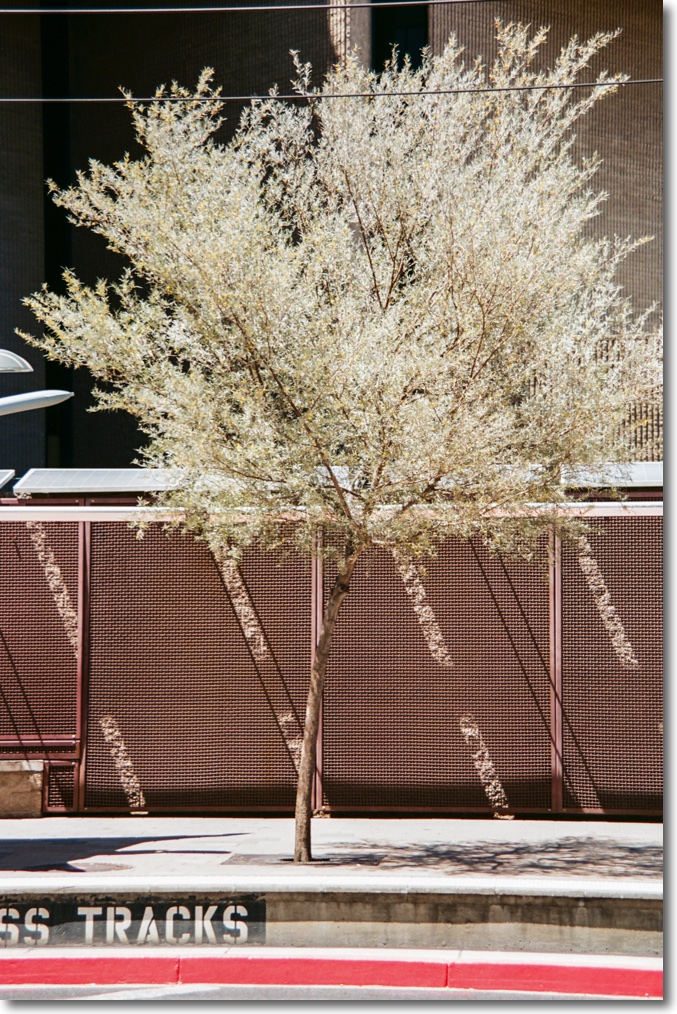
It would be churlish to deny the influence of the great Keld Helmer-Petersen on my work, for he is one of the masters who taught me how to see all those decades ago in the era of film.
Sharpprints.com is located in Eau Claire, Wisoncsin and the results of their work testify to solid, midwestern American values. There’s no nonsense about creating an account so that they can inundate you with junk mail. Just mail in the film after printing, completing and including their online form and you are done. I recommend them.